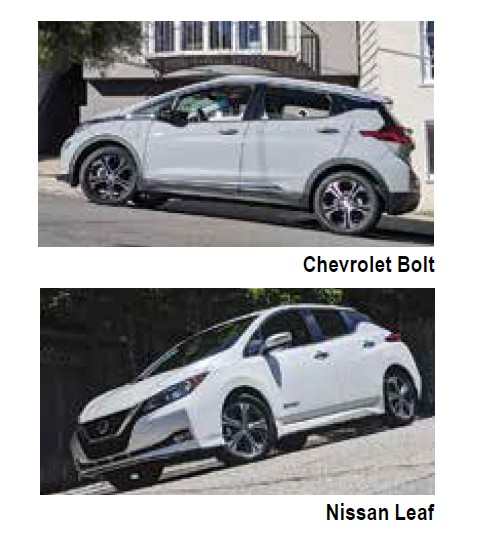
By Philip Ruth–
The Chevy Bolt has been getting some press lately. A recall for battery fires has added another layer to the discussion of electric vehicle (EV) safety, even while it has been teased for the 2022 Bolt nameplate to include an SUV—oops, an “EUV”—Electric Utility Vehicle.
Bolt sales volume is a fraction of the Tesla Model 3’s—a year of Bolt sales don’t equal a month of the Model 3—and so it is logical that Chevrolet would move to grow the Bolt lineup, particularly with a focus on the ever-popular crossover market.
The Nissan Leaf is a veteran in the EV field, and in December 2020, it passed 500,000 total sales since its introduction a decade prior. That cumulative achievement is tempered by the Leaf’s recent sales decline. This Nissan EV now represents less than 5% of the Model 3’s monthly take rate.
Industry titans General Motors and Nissan being shown up by a Silicon Valley upstart is a story with enduring lessons. And, Model 3 buyers are generally satisfied. The market moves on, unless you are a practical purchaser who separates popularity from a product’s real-world merits, and especially when that product might be steeply discounted to move the metal … and the batteries.
“How far will it go on a charge?” is the first question EV prospects ask, and the Bolt was upgraded for 2020 to a longer range of 259 miles. That’s just below the Standard Range Plus Model 3’s 263 miles, though the Long Range grows that to 353 miles.

The Leaf’s range starts lower at 149 miles for the base model. The Plus puts it over 200 miles: 226 miles for the Plus S and 215 for the fancier Plus SV and Plus SL trims. It is deficient by comparison, but if you are using your EV mostly for city errands, the base Leaf might be more than adequate.
Over the road, both the Bolt and Leaf are blissfully quiet. By eliminating the thrash and grind of the piston engine, electric vehicles have democratized what was once a luxury experience, achieved after larding on hundreds of pounds of sound deadening to isolate the propulsion’s noise and friction.
They couple the quiet with a smooth ride, smoother in the Leaf thanks to its softer suspension, but the Bolt’s firmer bearing helps it corner more eagerly. There’s not much road feel in their steering, but neither has many surprises in their handling. Silent and obedient are they.
One-pedal driving is offered on both, and it’s not as odd as it sounds. Shrinking the functions from two pedals to one makes the process more fluid, once you get the hang of it, which for me took only a few blocks. The seamlessness it encourages ends up as another EV nicety.
Otherwise, the Leaf has Nissan’s Zero Gravity seats, the Bolt has better outward visibility, and both are capacious, with 30 cubic feet available in the Leaf and 57 cubic feet in the Bolt. Both are good at their jobs, and they’re going cheap.
Philip Ruth is a Castro-based automotive photojournalist and consultant with an automotive staging service.
Published on January 14, 2021
Recent Comments